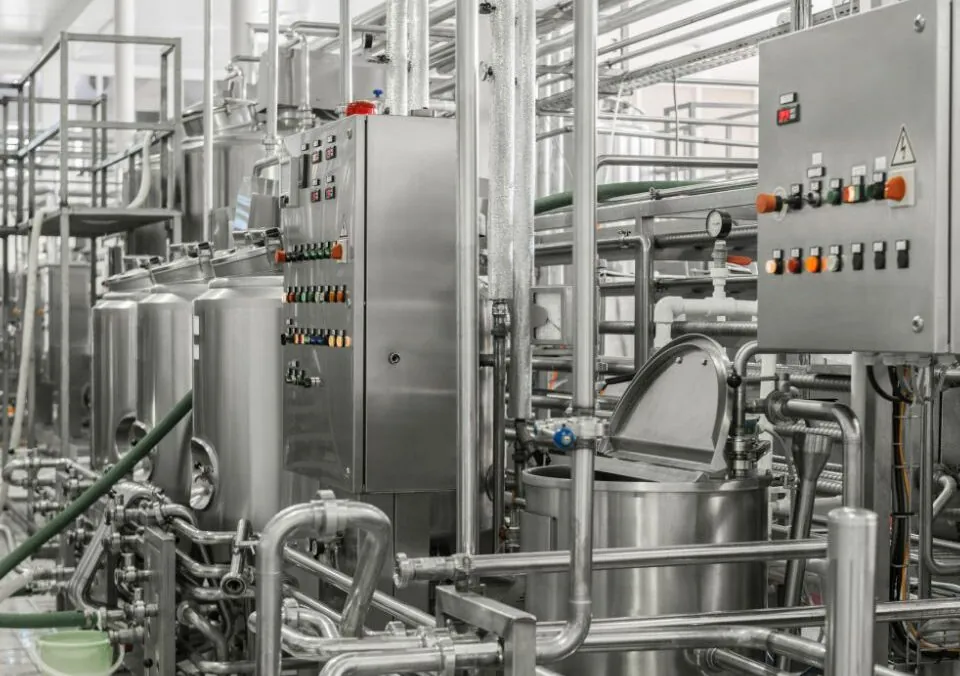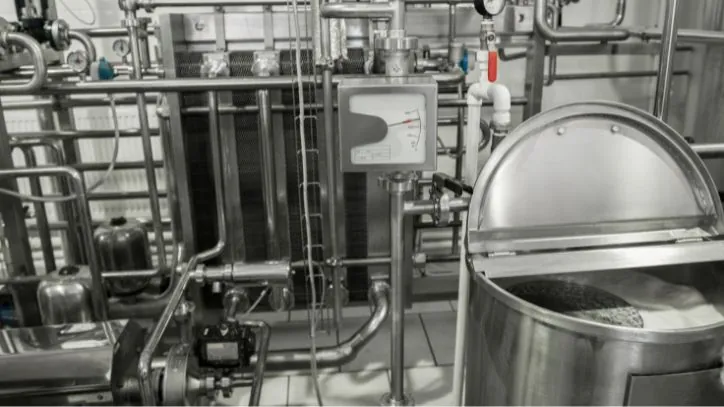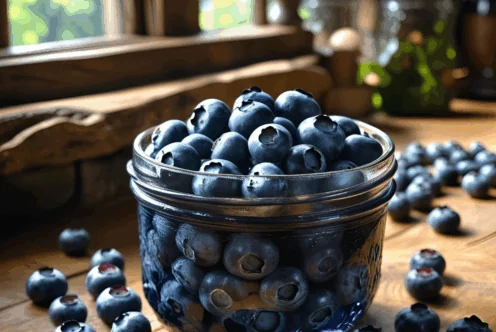Blog
Dairy 101 – What is Pasteurization?

Whenever you pick up a jug of milk from the grocery store, you probably notice the label prominently stating “Pasteurized.” In fact, virtually all milk products on supermarket shelves are pasteurized, unless they’re labeled as raw milk. But what exactly does it mean when milk says that it has been pasteurized? Understanding the process of pasteurization is crucial in appreciating the safety and quality of the dairy products we consume daily.
The Origin of Pasteurization
Pasteurization is a process named after the French scientist Louis Pasteur, who developed this method about 150 years ago. Louis Pasteur’s primary goal was to find ways to keep harmful bacteria at bay. The discovery came during his experiments on fermentation and spoilage. He found that heating liquids to a certain temperature could eliminate the bacteria that caused spoilage and diseases without significantly altering the taste or nutritional value of the liquid.
The first pasteurization plant in the United States was opened in New Jersey, paving the way for safe milk consumption across the nation. Today, all milk sold in the United States is required to be pasteurized unless it’s explicitly sold as raw milk, which is subject to more strict regulations. For a deeper dive into the history of pasteurization, consider exploring resources from National Dairy Council or the USDA.
What is the Pasteurization Process?
The pasteurization process begins when chilled milk is heated as it is passed between stainless steel plates to reach a temperature of about 161 degrees Fahrenheit (approximately 72 degrees Celsius). This high temperature is essential for destroying pathogenic microorganisms, which can pose serious health risks.
Once the milk reaches this temperature, it is held at that heat for about 15 seconds. This time frame may seem brief, but it is precisely calculated to ensure that the harmful bacteria are effectively eliminated. After this short duration, the milk is rapidly cooled back to its usual temperature of around 39 degrees Fahrenheit (4 degrees Celsius) to preserve its freshness.
This method of pasteurization reflects a principle known as thermal processing, which is widely used not only in the dairy industry but also in the preservation of food and beverages, including juices and canned goods. For further reading about the science behind thermal processing, check out resources from Food Processing.
Why is Pasteurization Important?
Pasteurization is vital for several reasons:
- Safety: The primary benefit of pasteurization is the elimination of harmful bacteria, including Listeria, Salmonella, and E. coli, which can cause severe illness. Before pasteurization became standard practice, thousands of cases of milkborne illnesses were reported each year.
- Shelf Life Extension: The heating process not only eliminates pathogens but also reduces spoilage by inactivating spoilage organisms, thus extending the shelf life of milk.
- Nutritional Integrity: One of the remarkable aspects of pasteurization is that it retains most of the milk’s nutrient composition. Although a minor loss of vitamins occurs, particularly with vitamin C (less than 10% of the recommended daily allowance), the essential nutrients such as calcium, protein, and vitamin D remain largely intact.
- Consumer Trust: The practice of pasteurization has significantly increased public confidence in milk safety. Reports like those found in the CDC’s Milk Safety program emphasize that pasteurized milk is safe for consumption and does not carry the risks associated with raw milk.
As you can see, pasteurization plays a crucial role in ensuring that the milk we consume is both safe and nutritious.
Types of Pasteurization
There are several methods of pasteurization employed in the dairy industry, each tailored for different products and processing requirements:
- High-Temperature Short-Time (HTST): This is the most common form of pasteurization used for fluid milk. As mentioned earlier, it heats milk to 161°F for 15 seconds.
- Ultra-High Temperature (UHT): UHT pasteurization involves heating milk to temperatures of 280°F for at least 2 seconds. This method extends shelf life considerably, allowing milk to be stored without refrigeration until opened. UHT milk is widely used in many countries, especially for products that can be stored for extended periods.
- Batch or Vat Pasteurization: This older method heats milk in large vats to 145°F for 30 minutes. While it is effective, it is less efficient than HTST or UHT methods, as the process takes much longer.
- Flash Pasteurization: This method involves heating milk to the required temperature almost instantaneously before cooling it. It is primarily used for products that require a quick turnaround.
Each of these methods serves its purpose, and understanding them helps consumers appreciate the diverse offerings available in the dairy aisle.
Nutritional Benefits of Pasteurized Milk
Despite some minor losses in certain vitamins, pasteurized milk retains a wealth of nutritional benefits. Here are some of the critical nutrients found in pasteurized milk:
- Calcium: Essential for bone health, calcium in milk is well absorbed by the body. Consuming pasteurized milk is an excellent way to meet daily calcium requirements.
- Protein: Milk is a rich source of high-quality protein, providing all the essential amino acids needed for muscle growth and repair.
- Vitamins: Pasteurized milk is a good source of vitamins, including vitamin D, which supports bone health, and riboflavin, which plays an important role in energy metabolism.
For optimal health, adults and children are encouraged to include dairy products like pasteurized milk in their diets. The Dairy Council promotes the health benefits of dairy and underscores the role it plays in a balanced diet.
Raw Milk vs. Pasteurized Milk
While pasteurized milk is the industry standard, some consumers opt for raw milk, believing it to be more nutritious or flavorful. However, it is vital to understand the risks associated with consuming raw milk. Raw milk can harbor dangerous microorganisms that can lead to serious health complications.
For example, the CDC warns that raw milk can contain bacteria like Salmonella, E. coli, and Listeria, which pose significant health risks, particularly for vulnerable populations such as children, the elderly, and those with weakened immune systems. The potential for foodborne illnesses raises concerns among health professionals, leading many to advocate for the consumption of pasteurized dairy products.
Consumer Awareness and Safety Standards
The safety and quality of pasteurized milk are safeguarded by stringent regulations set forth by various authorities, including the Food and Drug Administration (FDA) and the United States Department of Agriculture (USDA). These regulations ensure that pasteurized milk meets health and safety standards.
Regular inspections and quality controls are implemented in dairy processing plants to ensure that pasteurization processes are followed meticulously. Dairy farmers and processors are required to maintain high hygiene standards, monitor the temperature during pasteurization, and conduct regular testing of their products. These measures contribute to the overall safety and quality of milk consumed by the public.
For consumers interested in understanding more about food safety regulations, FDA’s Food Safety Modernization Act provides comprehensive guidelines and standards to protect the food supply.
The Environmental Impact of Dairy Farming
Beyond safety and nutrition, the pastauration process also relays to broader environmental considerations in dairy farming. Issues such as greenhouse gas emissions, land use, and water consumption are increasingly important as consumers become more conscious of their food choices.
Dairy farming has a significant environmental footprint, and efforts are underway to promote sustainable practices in the industry. Innovations in feed efficiency, manure management, and water conservation are being explored to minimize the environmental impact of dairy production. Organizations are working to improve farming practices that protect the environment while ensuring that dairy products remain affordable and accessible.
Cultural and Culinary Aspects of Dairy
Dairy is not just about nutrition and safety; it is also deeply woven into various cultures and cuisines around the world. From creamy Italian gelato to Indian yogurt-based dishes, dairy products play a crucial role in global culinary traditions.
Cheese, yogurt, and butter are among the many dairy products that have diverse applications in cooking and baking. Each of these products can undergo different fermentation and maturation processes that enhance flavors and textures, creating unique culinary experiences.

The Future of Dairy: Trends and Innovations
As consumers continue to demand high-quality, safely-produced food, the dairy industry is evolving. Innovations in technology, sustainability practices, and shifts in consumer preferences are shaping the future of dairy.
For example, plant-based alternatives to dairy products have gained significant popularity, leading to the development of a new market segment. Many dairy producers are exploring ways to produce traditional dairy products alongside these alternatives, creating hybrid offerings that cater to diverse consumer preferences.
Furthermore, ongoing research into animal welfare, nutritional enhancements, and sustainable farming practices is set to redefine the dairy landscape in the coming years.
Conclusion
Pasteurization is a revolutionary process that has dramatically improved the safety and quality of milk and dairy products over the last century. By understanding this essential method and its benefits, consumers can make informed choices about their dairy consumption.
From its historical roots through Louis Pasteur’s groundbreaking work to modern-day processing techniques and sustainable practices, pasteurization has made safe, nutritious milk accessible to many. As we move forward, continued innovation and an emphasis on health and sustainability will ensure that we not only enjoy dairy products but also contribute to the well-being of our planet and society.
If you’re eager to explore more about the marvelous world of dairy, consider checking out blogs and articles on platforms like Fill Your Plate. June is recognized as National Dairy Month, presenting a perfect opportunity for consumers to deep-dive into articles exploring the benefits of dairy and the innovations surrounding the industry.
By educating ourselves about these topics, we can appreciate the complexities and intricacies behind our favorite dairy products, ensuring we enjoy them while also advocating for safe and responsible practices in the industry.
By Heide Kennedy, Arizona Farm Bureau Communications Intern


















